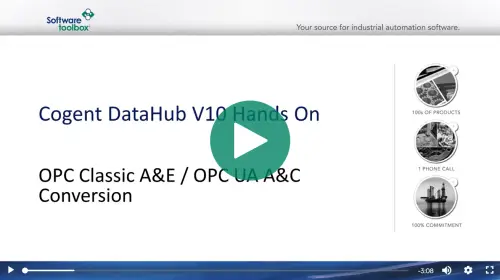Video: Streamline Alarm Management Across Multi-Vendor Systems
Struggling with alarm chaos and security gaps across multi-vendor PLCs, SCADA, and HMIs? DataHub and TOP Server simplify alarm management by enabling you to create alarms, convert legacy OPC A&E to OPC UA A&C, securely tunnel alarm data, and aggregate it across systems—all with encryption, authentication, and no open inbound firewall ports. The result is faster response, reduced integration effort, and real-time visibility from edge to cloud. Watch the 3-minute demo: Converting OPC A&E to OPC UA A&C.
Watch Video







